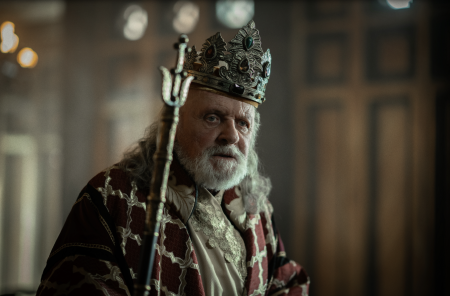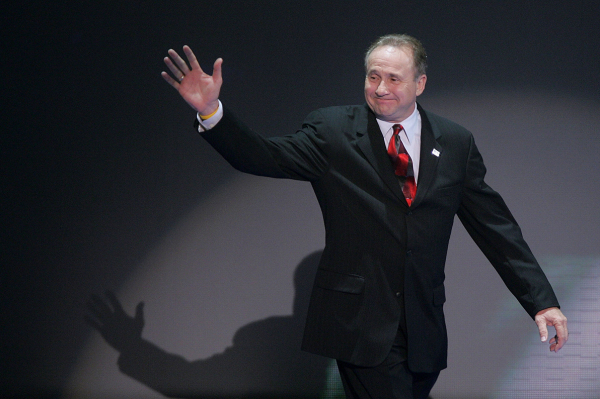‘Mary’ director on exploring Nativity through Mary’s eyes, spiritual warfare in Netflix film

Just ahead of Christmas, Netflix’s epic “Mary” delves deeply into the Virgin Mary’s journey as a young woman chosen for an extraordinary destiny, yet grappling with faith, societal rejection and spiritual warfare.
In an interview with The Christian Post, director D.J. Caruso (“Disturbia,” “I Am Number Four”) said that, unlike traditional Nativity retellings, “Mary” focuses its lens on the mother of Jesus and strives to present the journey through her eyes.
“Cinematically, Mary’s story has been underappreciated,” Caruso told CP. “She delivered the greatest gift the world has ever received, but we’ve rarely seen her experience fully explored. I also felt like there was a real need to humanize her journey, so you can feel what it felt like with her, and you can relate to her … our daughters can relate to her. Everyone can relate to what she was going through, because a lot of what Mary went through, the contemporary world is sort of throwing us those same curve balls here today.”
Shot in Morrocco, “Mary” stars Israeli actress Noa Cohen as Mary, alongside Ido Tako as Joseph and Academy Award-winner Anthony Hopkins as King Herod. The film follows Mary’s miraculous conception and the intense challenges that ensue. Shunned by her community and forced into hiding, Mary embarks on a treacherous journey with Joseph to protect their newborn son from King Herod’s violent quest to eliminate any threat to his throne.
In creating the film, Caruso emphasized the importance of presenting Mary not just as a holy figure but as a relatable human being.
“Obviously, amazing things happened to this young woman, from the visit of Angel Gabriel and to understanding how her birth came about. But at the same time, the human world, the nature of man, and all those things that are happening in this world are still forces that are against her,” he said.
“She's got to swim upstream. She has to fight all the fights. When she accepts this, the fiat, which I think is such an amazing moment for all of us, and says, ‘Let it be done.’ She turns her life over to the Lord and says, ‘You're in my heart forever. I'm yours.’ And then her life doesn't get much easier; there's always going to be a struggle and a fight to do something amazing. And I think that's a really strong message.”
The film depicts conversations between Lucifer and the Angel Gabriel, a creative choice Caruso said he made to highlight just how much opposition Mary faced, both physically and spiritually, while bringing the Son of God into the world.
“Spiritual warfare is something we all battle with every day,” he said. ‘I think it was important to illustrate that, particularly when you can see the spiritual warfare that's happening to Mary. What's going on is Lucifer is like … ‘Just take the easy way out.’ … But obviously, through the suffering and pain is how we get closer to God. But there's always that temptation in there to just not do it, and to just say, ‘Why do I have to go through this?’ … I wanted to bring that in so you can see there always is a voice trying to get you to … do what isn’t right, even if it's the easy way. So for me, it was really important to bring that element into the story.”
Caruso’s own faith heavily influenced his approach to the story. A practicing Catholic and father of five, the director told CP he drew from personal spiritual experiences to bring authenticity to the film.
“Faith is in my DNA,” he noted. “When you're a spiritual person or you're a person of faith, it just informs you in so many different ways. Even in the movies that I've made and directed that aren't necessarily on this theme, you can feel the spirituality. … That element of Christ in your heart is always present. It might not always be overt and out there in the open, but it's in everything that I do, so it affects every decision I make.”
According to Caruso, the challenge of retelling the Nativity story in “Mary” lay in navigating the balance between staying faithful to Scripture and filling narrative gaps to create a compelling cinematic experience.
“There’s not a lot of material on Mary in the Bible — just a few key texts in Matthew, Luke, and some other references,” Caruso explained. “As a filmmaker, you have to respect the biblical framework while also filling the voids in ways that honor the spirit of her journey.”
For example, he said, the film delves into the harrowing journey of Mary and Joseph to Egypt, imagining what dangers they might have encountered.
“If Herod was sending the Roman soldiers out to find the Messiah and to destroy this child, and destroy these children, what would it be like for any mother to have to protect your child?” he said.
“Here we are with Mary. So how do we experience that? And we don't know on the way to Egypt how many times they could have been encountered, because it's not in the Bible. So filling all these things in that can make the movie emotional, can get you sitting at the edge of your seat, and still staying true to the framework of the biblical story was very vital and very important to me.”
Caruso said that Joseph, traditionally a silent figure in the Gospels, is intentionally given a more active voice in the film. “Joseph is a silent participant in the Gospel. He doesn't have a word. So how do you give Joseph a voice, and how do you make him vital, and how do you make him important? And I feel like that is something where you can take liberty, as long as you're being respectful to the text and everything. Because Joseph needed a voice, and as a filmmaker, I have to give him a voice.”
The director said that despite the creative liberties taken with the story, his filmmaking process was deeply informed by extensive research, involving consultation with theologians, pastors and biblical scholars, including the late Bishop David O’Connell — “a Mary expert” and a crucial advisor on the project.
Beyond canonical texts, Caruso also drew from historical and apocryphal sources, such as the Infancy Gospel of James, to gain additional insight into Mary’s life and times.
“While not part of the canonized Bible, these texts provided fascinating context about Mary’s parents, Joachim and Anne, and other elements of her story,” Caruso said.
Historical accounts, such as those by Josephus, also helped shape the portrayal of King Herod and the sociopolitical backdrop of the film.
Hopkins, 86, brought “this slight bit of regret” to the character, Caruso said, adding: “In a way, he's almost looking for the Messiah, maybe not to destroy the Messiah, but looking for the Messiah for another reason, but he doesn't even know what it is. Sir Anthony brought that to the character, and it was really just wonderful to see his process.”
“Mary” is the latest in a slew of TV shows and films based on Bible stories to release in recent years. Most notably, “The Chosen,” a multi-season series about the life of Christ and His disciples, began as a crowdfunded indie short in 2017 and has since become a global phenomenon. In January, Amazon MGM Studios announced it had entered into an agreement with the Wonder Project and ordered a new Bible-based series, "House of David," for Prime Video.
“Audiences are hungry for these stories, and Hollywood is realizing their power,” he said. “But it’s not just about telling them — it’s about telling them beautifully. If we’re making something for the Lord, why not make it the best it can be?”
Releasing “Mary” on Netflix marks a watershed moment for faith-based cinema, Caruso said. “The potential reach is staggering,” Caruso said. “With Netflix, ‘Mary’ will be available in 45 languages and across the globe. It’s amazing to me, it’s so powerful.”
Ahead of the Christmas season, Caruso said he hopes “Mary” is a film that inspires reflection and fosters a connection with one of history’s most remarkable figures.
“We all need to say, ‘Let it be me,’” he said. “It’s really hard to do that. When Mary did that … that was my revelation. That's why I made the movie … it was such an important and vital moment; it pierced my heart. It was such a beautiful moment. In this world, it's full of chaos; there's a lot of beauty, but we all have to decide what we are going to do. Are we going to let man's nature and all these things take us this way, or are we going to follow God's grace? And if we can follow God's grace, it might not always be easy, but that's what we need to do.
“I just want [viewers] to be inspired by the sacrifices and by the challenges that she had to overcome, and to see what amazing good could come out of making those sacrifices,” he added. “I want everyone to love and appreciate her more … to realize she brought so much light into this world.”
Mary premieres on Netflix on Dec. 6. The film also stars Stephanie Nur, Susan Brown, Ori Pfeffer, Eamon Farren, Hilla Vidor, Mili Avital, Gudmundur Thorvaldsson, Dudley O'Shaughnessy, Keren Tzur, Mehmet Kurtulus and Mila Harris.
“Mary” is rated TV-14 for language and violence.
Leah M. Klett is a reporter for The Christian Post. She can be reached at: leah.klett@christianpost.com





















